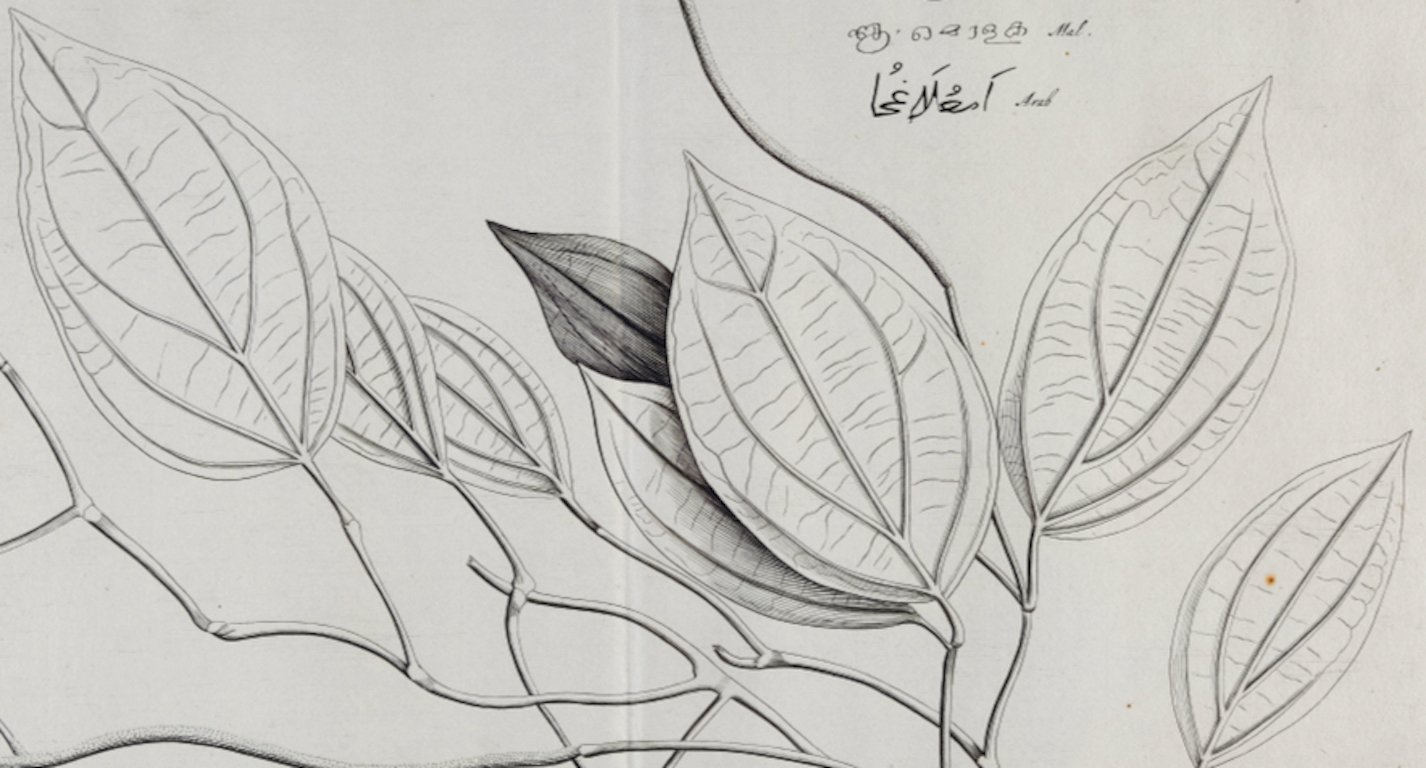Banana Plants: An 18th Century Hand-colored Botanical Engraving by J. Weinmann
This is a striking original antique colored botanical mezzotint and line double page engraving of banana plants, which is finished with hand-coloring. It is entitled "Banana 1. Musa, Dudaim, Baradis-feigen", published in 1736 by Johann Wilhelm Weinmann as plate 227 in his monumental publication "Phytanthoza Iconographia".
Creator: Johann Wilhelm Weinmann (1683 - 1741, German)
Creation Year: 1736
Dimensions: Height: 15.5 in (39.37 cm)
Width: 18.5 in (46.99 cm)
Medium: Engraving, Mezzotint
Condition: See description below.
Reference #: 3908
This is a striking original antique colored botanical mezzotint and line double page engraving of banana plants, which is finished with hand-coloring. It is entitled "Banana 1. Musa, Dudaim, Baradis-feigen", published in 1736 by Johann Wilhelm Weinmann as plate 227 in his monumental publication "Phytanthoza Iconographia".
Creator: Johann Wilhelm Weinmann (1683 - 1741, German)
Creation Year: 1736
Dimensions: Height: 15.5 in (39.37 cm)
Width: 18.5 in (46.99 cm)
Medium: Engraving, Mezzotint
Condition: See description below.
Reference #: 3908
This is a striking original antique colored botanical mezzotint and line double page engraving of banana plants, which is finished with hand-coloring. It is entitled "Banana 1. Musa, Dudaim, Baradis-feigen", published in 1736 by Johann Wilhelm Weinmann as plate 227 in his monumental publication "Phytanthoza Iconographia".
Creator: Johann Wilhelm Weinmann (1683 - 1741, German)
Creation Year: 1736
Dimensions: Height: 15.5 in (39.37 cm)
Width: 18.5 in (46.99 cm)
Medium: Engraving, Mezzotint
Condition: See description below.
Reference #: 3908
This engraving is printed on laid chain-linked paper with wide margins all around. There is a central vertical fold, as issued. It measures 15.5" high and 18.5" wide. There is a faint smudge in the lower left, a small faint spot in the lower right margin and two very short tears along the upper edge of the sheet, which have been expertly repaired on the verso. There are two small marks in the upper right which appear to represent drop-off watercolor paint left by the artist when the piece was hand colored. The print is otherwise in excellent condition.
Johann Wilhelm Weinmann (1683-1741) was a German apothecary and botanist who was greatly respected for his writings on medicinal plants and herbs. He was born in Gardelegen, Germany, the son of a barber named Matthias Christian Weinmann. In 1710, Weinmann settled in Regensburg (also known as Ratisbon) and found work as an assistant to an apothecary. He was able to purchase his own apothecary shop in 1712, and his business acumen allowed him to acquire another apothecary that had gone bankrupt and turn it into a profitable enterprise. He went on to become a successful businessman, serving as a town councillor, commercial assessor, and city assessor.
Weinmann's most significant contribution to the field of botany in the 18th century was his creation of the botanical work "Phytanthoza iconographia" between 1737 and 1745, an ambitious eight-volume project featuring over 1,000 hand-colored engravings of over 4,000 plant species. The work is highly regarded for its comprehensive coverage of the plant world and for the quality and accuracy of its illustrations. It is considered the first important botanical work to use color engraved prints. Weinmann employed the renowned botanical illustrator Georg Dionysius Ehret to contribute drawings to the project. a well respected botanist and entomologist and one of the most influential European botanical artists of all time. Weinmann was greatly respected for his writings on medicinal plants and herbs, and "Phytanthoza iconographia" is recognized as a landmark botanical work, one of the most comprehensive botanical references of the eighteenth century. It has been described as a pioneering work of botanical prints and it remains today one of the most ambitious works ever undertaken. In addition to "Phytanthoza iconographia", Weinmann also published a work called "Catalogus Alphabetico ordine exhibens Pharmaca" in 1723, and contributed botanical notes as "Observationes und Anmerkungen" in the "Breslauer Sammlungen".


























